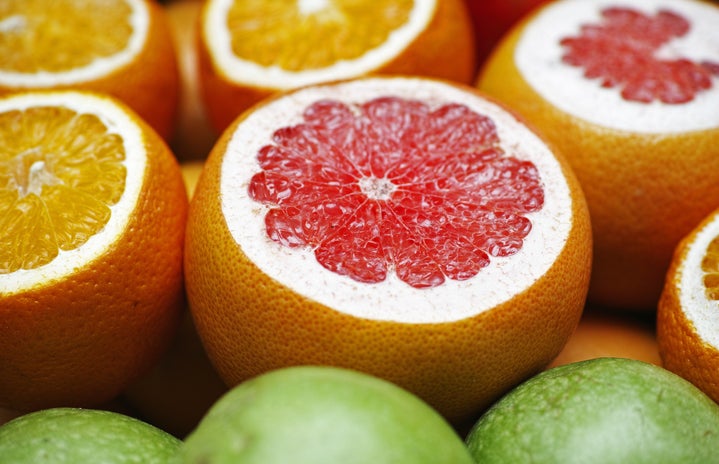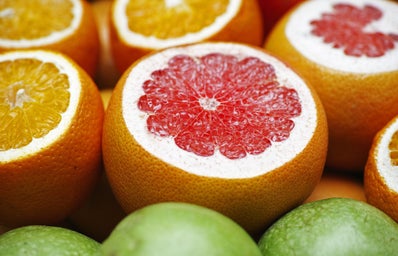This article has been syndicated to Her Campus from Fashion Food Fotos, an InfluenceHer Collective member. Read the full post here.
A few days into January I was texting my friend and dropped the fact that I was contemplating doing the Whole 30. I had seen quite a few articles flurried all over the internet about its benefits and how it can be a great program to use to start fresh and identify what foods might be making you feel gross on a day-to-day basis. I’m not normally a person who does food challenges and I’ve never been on a “diet” of any kind, but this year I definitely felt the need for a fresh start, and if food could help me feel better and get me out of my funk, then why not try it?
My friend asked what the challenge entailed and I laid out the details:
- No Grains
- No Dairy
- No Alcohol
- No Caffeine
- No Legumes (this includes peanuts)
- No Added Sugars
It is essentially the paleo diet, but with the added rule that you can’t make foods that are not Whole 30 using Whole 30-approved ingredients. This part of the challenge is supposed to help reformat your relationship with food, with the idea being that if you make banana and egg pancakes during the Whole 30, even though banana and eggs are both allowed, it won’t help you in the long run because you’ll just continue to crave pancakes and go back to eating them once the Whole 30 is over.
My friend, thankfully, said she was also interested and we decided to start it together, keeping each other in check by texting each other the details of our meals and snacks. I’ll go ahead and say right now that it wound up being about a Whole 25/30, because there were two weekends at the end of the month where I had social plans or didn’t have any paleo-friendly lunch options while I was out running errands, and I just wasn’t that hardcore about it. But I can still say the challenge was worth it for me and I learned more than I was expecting to about food and how it makes me feel. Here are some of the details:
Added Sugar Is in Everything
The “no added sugar” rule basically means you can kiss store-bought condiments and marinades goodbye. I wanted to make a beef ratatouille stew one day and the recipe called for tomato sauce, and shopping for that simple ingredient spiraled into me standing in the health food aisle of my grocery store reading labels on all the different tomato sauces for ten minutes until I found one that didn’t have added sugar in it. It’s tomato sauce! What the hell. I also failed at finding any chicken sausages that didn’t have at least some added sugars. I probably could have found some at Whole Foods, but I didn’t want to pay who-knows-how-much a pound for something as simple as chicken sausages. Which brings me to my next finding…
Whole Foods Are Freaking Expensive
The problem with excluding grains and legumes from your diet is that these are usually the elements of a meal that make you feel full. Without them I was eating so. Much. Food. Like a massive plate of chicken sausage, peppers, onion, and potato hash was not even close to enough for dinner, and I would have to add an apple with about half a cup of cashew butter (which is da bomb by the way) on top of that, and sometimes still felt hungry and would have to eat more. The recipes I was making said they would serve six to eight people, but wound up making about two to three portions… liars! For the first few weeks, it felt like I was going to the grocery store every other day, if not every day… because I was. I just kept eating all the food. I spent a little over $400 on groceries in January–close to $150 more than I usually spend, but it was worth it because…
Whole Foods Make you Glow From the Inside Out
You can probably attribute my amazing mood through January to a few different things (catching the “new year, new start” wave, coming to terms with the end of several relationships that had turned toxic, exercising four times a week, etc.), but what I was eating definitely played a part. I used to feel bloated and uncomfortable a lot of the time after I ate, but had always attributed it to just being a part of eating. Because of this I usually ate small amounts frequently throughout the day and thought that was a normal eating style to have. I was a “grazer.” On the Whole 30, I still occasionally snacked, but I was also eating massive meals (ex: two potatoes’ worth of hash browns and five scrambled eggs, plus apple and cashew butter) that I never would have been able to stomach on my regular diet that contained grains (even when I tried to stay with only gluten-free grains).
Read the full post here.

